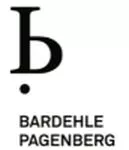Summary of the UPC month
Happy birthday, UPC!
During its first two years, the UPC has already proven itself as a fast and reliable, high-quality venue, with a growing body of case law making it even more predictable day after day. We are proud to have played an important part in this journey, leading the pack as the number one UPC firm by market share and the number of litigated patents for plaintiffs and defendants alike.
In the second year, the number of infringement actions filed with the UPC has more than doubled. This proves the trust the global patent community places into the new system. Meanwhile, 883 cases were received by the Court of First Instance. In May, 15 new infringement actions on the merits were filed, aside from Munich (which received 8) almost evenly distributed among the Local Divisions in Düsseldorf (2), Mannheim (2), The Hague (2) and Brussels (1). Additionally, 6 new applications for provisional measures were filed, a number higher than in each any of the previous three months.
Key decisions in a nutshell
The key decisions of the month are dealing with:
(1) Infringement of second medical use claims
For a finding of infringement of a second medical use claim, the alleged infringer must offer or place the medical product on the market in such way that it leads or may lead to the claimed therapeutic use of which the alleged infringer knows or reasonably should have known that it does. The requirements of such behavior cannot be defined in an abstract manner but require an analysis of all relevant facts and circumstances of the patent claim in question.
(2) Imminent infringement
A risk of infringement cannot be established through an abstract assessment. An infringement is deemed imminent if, in light of the overall circumstances of the case, it can be concluded that the potential infringer has engaged in conduct that is likely to result in an infringement under Art. 25 UPCA.
(3) Claim amendments under R. 263 RoP
If the defendant introduces new prior art with its reply in the counterclaim for revocation proceedings with which defendant justifies the lack of novelty and/or inventive step, it is an extension of the counterclaim for revocation within the meaning of R. 263 RoP.
Admission of this further prior art can therefore only be considered if the defendant is able to convince the court that the reference in question could not already have been submitted with the counterclaim for revocation and if the admission of this further reference does not unreasonably prejudice the plaintiff's conduct of the proceedings. The same applies if prior art already submitted with the counterclaim for revocation is used for the first time in the reply for a new attack on novelty and/or inventive step.
Remarks
In May, the Patent Mediation and Arbitration Centre of the Unified Patent Court (PMAC) launched a public consultation on its draft Mediation Rules (the draft rules can be found here: Patent Mediation and Arbitration Centre of the Unified Patent Court | Unified Patent Court). These rules include specific provisions for SEP disputes.
According to the UPC, the PMAC, which will operate with two seats in Ljubljana, Slovenia, and Lisbon, Portugal, is on track to be operational in early 2026. It remains to be seen whether the users of the UPC will actively seek this type of dispute resolution.
The content of this article is intended to provide a general guide to the subject matter. Specialist advice should be sought about your specific circumstances.


